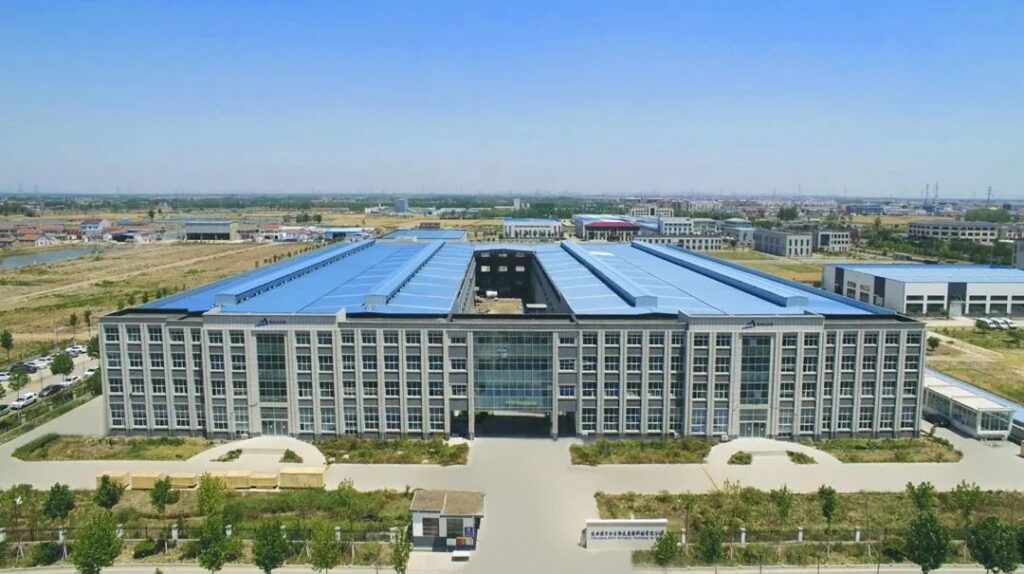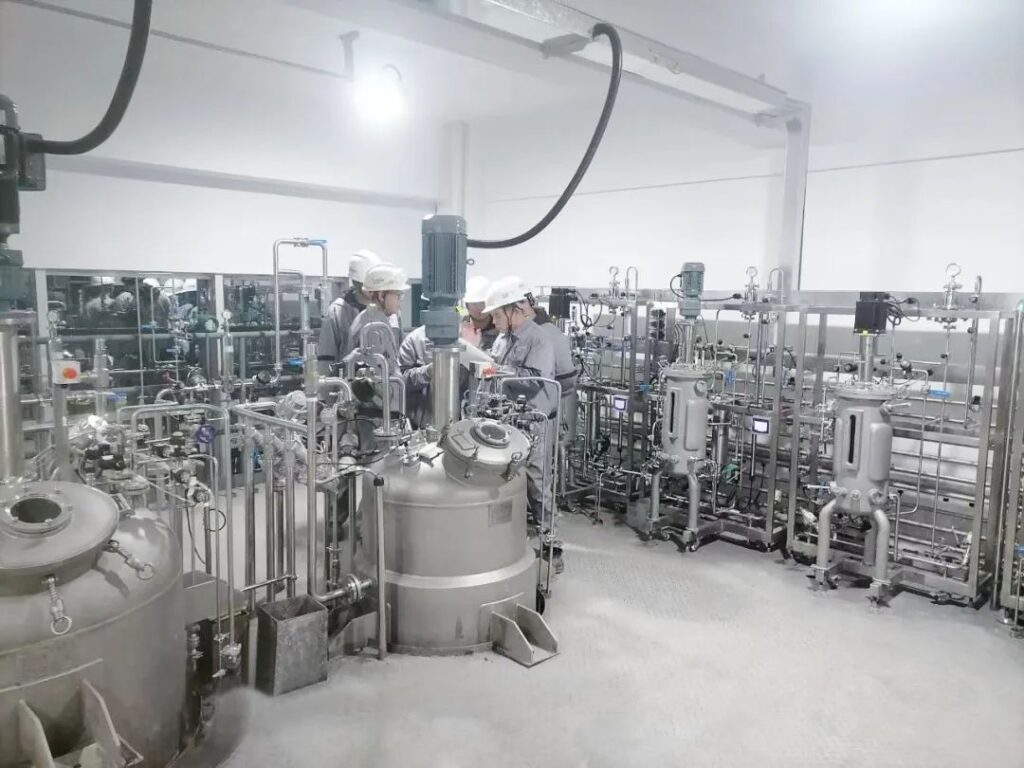Protein engineering is to obtain information about the physical and chemical properties and molecular properties of proteins through the study of protein chemistry, protein crystallography and protein dynamics, and on this basis, purposefully design and modify the genes encoding proteins, and obtain genetically modified organism systems that can express proteins through genetic engineering technology, which can be transgenic microorganisms, transgenic plants, transgenic animals, and even cell systems.
Practical application:
1.Improved stability
Improving the stability of proteins includes the following aspects: (1) prolonging the half-life of enzymes;
(2) improve the thermal stability of enzymes;
(3) prolong the shelf life of medicinal proteins;
(4) Resist the loss of activity caused by the oxidation of important amino acids.
Glucose isomerase (GI) is widely used in industry, in order to improve its thermal stability, Zhu Guoping et al. determined that glycine at position 138 (Gly138) was the target amino acid, and then used the double primer method to mutate the GI gene in vitro site-directed mutagenesis, replacing Gly138 with proline (Pro138), and the recombinant plasmid containing the mutant was expressed in Escherichia coli, and the results showed that the thermal half-life of the mutant GI was twice as long as that of the wild type, the optimal reaction temperature was increased by 10~12 °C, and the enzyme specific activity was the same. According to the analysis, after Pro replaces Gly138, it may be due to the introduction of a pyrrole ring, which can just fill the hole near Gly138, making the protein spatial structure more rigid, thereby improving the thermal stability of the enzyme.
2.Fusion proteins
The N-terminal 5-peptide linearity structure of enkephalin (Enk) is an essential functional region that binds to δ receptors, and interferon (IFN) is a broad-spectrum antiviral and antitumor cytokine. Li Mengfeng et al. chemically synthesized the EnkN-terminal 5 peptide coding region, which was linked to the human α3 IFN gene through a 1-peptide coding region, and expressed this fusion protein in Escherichia coli. In vitro human colon adenocarcinoma cells and glioma multiforme cells were used as models, and the inhibition activity of the fusion protein was significantly higher than that of IFN alone by 3H-thymine nucleoside incorporation method, and the increase of inhibitory activity was mediated by the Enk guide region by Naloxone competition blocking assay.
3.Altered activity
Usually, 30~60min after meals, the content of insulin in the human blood reaches its peak, and it returns to the basic level within 120~180min. However, the current clinical use of insulin preparations only peaks 120min after injection and lasts for 180~240min, which is inconsistent with human physiological conditions. Experiments have shown that insulin exists in the form of dimers at high concentrations (greater than 10-5mol/L) and mainly in monomeric form at low concentrations (less than 10-9mol/L). Rapid-acting insulin is designed to avoid the formation of aggregates of insulin. The structure and properties of insulin-like growth factor-I (IGF-I) have a high degree of homology and three-dimensional structural similarity with insulin, but IGF-I does not form a dimer. The B28-B29 amino acid sequence in the B domain of IGF-I (corresponding to the insulin B chain) is reversed compared to the B28-B29 of the insulin B chain. Therefore, the insulin B chain was changed to B28Lys-B29Pro to obtain monomeric rapid-acting insulin. This rapid-acting insulin has been clinically tested.
4.Anti-cancer enzyme modification
Gene therapy for cancer is divided into two aspects: drugs act on cancer cells to specifically inhibit or kill cancer cells, and drugs protect normal cells from chemical drugs, which can increase the dose of chemotherapy. HERPES VIRUS (HSV) THYMINE KINASE (TK) CAN CATALYZE THE PHOSPHORYLATION OF THYMINE AND OTHER STRUCTURAL ANALOGUES SUCH AS GANCICLOVIR AND ACYCLOVIR ACYCLIC GUANOSINE. THE LACK OF A 3′ HYDROXYL GROUP IN GANCICLOVIR AND ACYCLOVIR ALLOWS IT TO STOP DNA SYNTHESIS AND THUS KILL CANCER CELLS. THE ABILITY OF HSV-TK TO CATALYZE GANCICLOVIR AND ACYCLOVIR CAN BE IMPROVED BY GENETIC MUTATIONS. One was screened from a large number of random mutations, and 6 amino acids were replaced near the active site of the enzyme, and the catalytic capacity was increased by a factor of 43 and 20, respectively. O6-alkyl-guanine is the main mutagen and cytotoxin formed by the treatment of DNA with alkylating agents, including nitroso drugs for chemotherapy, so the dosage of these nitroso drugs is limited. O6-alkylguanine-DNA alkyltransferase (AGT) removes the alkyl group on guanine O6 and plays a protective role. Human AGT was expressed and protected in murine bone marrow cells by reverse viral transfection. Through mutation treatment, some positive mutant AGT genes were obtained, and the activity was higher than that of the wild type, and it was found that the 6th proline in one mutant gene was replaced by alanine.
5.Chimeric antibodies
Immunoglobulins are Y-shaped and consist of two heavy chains and two light chains linked to each other by disulfide bonds. Each chain can be divided into a variable region (N-terminus) and a constant region (C-terminus), with the adsorption site of antigens in the variable region and the adsorption site of cytotoxins or other functional factors in the constant region. Three parts of each variable region are highly variable in amino acid sequence, in the three-dimensional structure is a loose structure at the end of the β fold (CDR), which is the binding site of the antigen, and the rest is the support structure of the CDR. The CDR structure of different species is conserved, which allows the antibody to be engineered by protein engineering. Murine monoclonal antibodies are rejected by the human immune system, and their potential therapeutic benefits are not exploited. Chimeric antibodies are the constant region of mouse monoclonal antibody replaced by the constant region of human antibody, so that its immunogenicity is significantly reduced. For example, Mab17-1A, a monoclonal antibody used for the treatment of rectal adenocarcinoma (COLORECTALADENOCARCINOMA). Although chimeric antibodies still have immunogen issues, several chimeric antibodies have passed clinical trials. The so-called humanized antibody is to graft the antigen adsorption region to the human antibody, so that the exogenous peptide chain on the antibody is reduced to a minimum, and the immunogenicity is minimized. However, when CDR is only transduced to human antibodies, its antigen adsorption capacity is very small, and several framework amino acid residues must be carried to maintain the original adsorption capacity. In this way, there is a contradiction between immunogenicity and antigen adsorption. Amino acid-by-amino acid substitution or in silico analysis can reduce immunogenicity as much as possible while maintaining the original adsorption. CAMPATH-1H, the first clinically used human antibody for the treatment of lymphogranulomatous disease and rheumatoid arthritis, has an immune response in more than half of patients, despite its remarkable efficacy. However, other humanized antibodies, such as ANTI-CD33 for the treatment of spinal leukemia, have negligible immune responses.
Development prospects:
Protein engineering is a growing field. The capabilities of protein engineering have revolutionized healthcare, industry, research, and development. In this paper, we summarize the current development trend of protein engineering, and show that protein modification not only develops from traditional methods to new methods, but also provides new ways for many new proteins with new properties and applications. This review provides readers with insights into recent approaches and scope of protein engineering and how best to utilize these methods. It also highlights the importance of protein engineering in the future and sheds light on several such methods that can be optimized and well explored for the production of engineered proteins at the industrial level. It is clear that with the rapid emergence of new methods and pathways in this area, protein engineering may soon become as important as the tuning of DNA to efficiently engineer targeted activities and functions in proteins.
About BaiLun Biotechnology Co., Ltd:
BaiLun Biotechnology Co., Ltd. stands as a leading supplier and premier technical service provider, specializing in the provision of comprehensive bioreactor systems and advanced control solutions. Our extensive product line encompasses a wide array of offerings, ranging from bioreactors (fermenters) to animal cell bioreactors, biological shakers, and control systems tailored for bioprocessing applications. With a capacity spanning from 0.1L to 1000KL, we are committed to fostering the growth of China’s bioreactor industry on a global scale.
At BaiLun, we boast a seasoned team of engineers equipped with profound expertise in fermentation processes, biochemical equipment, and chemical technology. Moreover, we actively engage nationally renowned experts and scholars as technical consultants, ensuring the robust technological underpinnings of our products. Central to our ethos is a relentless pursuit of product innovation and technological leadership, all geared towards guaranteeing utmost customer satisfaction. We hold ourselves accountable to prioritize customer benefits, embodying this commitment as the cornerstone of Bailun Company’s core values.
Our diverse product portfolio is meticulously crafted to cater to the multifaceted demands of our clientele. From inception, we have upheld the principles of quality paramountcy, customer-centricity, and integrity-driven operations. It is our unwavering dedication to meeting the evolving needs of our customers that propels us forward. Embracing the tide of economic globalization, we extend a genuine invitation to collaborate with enterprises worldwide, aiming for mutual prosperity and success.
The spirit of BaiLun encapsulates a dedication to customer-centricity, a pursuit of excellence in quality, a commitment to fairness and integrity, and an unwavering drive for continuous improvement and innovation.
Contact Us:
Add:6848# Liuxiang Rd., Jiading, Shanghai, China
Contact Person: Maddie
Email:[email protected]
Phone:+86-134-7276-8163 (WhatsApp)
Website: https://fermentorchina.com/


